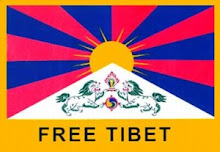 What more can be said about the Strawbs? On the net you can easily find thousands of pages about this band, one of the better (if not the best) folk-oriented progressive groups to emerge in England in the late 60s. From the Wichwood is one of the highest points in their long and glorious career. Here's a sample review from Progarchives:
What more can be said about the Strawbs? On the net you can easily find thousands of pages about this band, one of the better (if not the best) folk-oriented progressive groups to emerge in England in the late 60s. From the Wichwood is one of the highest points in their long and glorious career. Here's a sample review from Progarchives:«From the Witchwood marked the start of the Strawbs transition in earnest from a primarily acoustic folk based band to a prog rock orientated band with strong folk influences. The album represents Rick Wakeman’s last venture with the Strawbs, before he was headhunted by Yes. […] Wakeman does manage to add some wonderfully dramatic effects to From the Witchwood, particularly with the menacing organ on The hangman and the Papist. The song is an incredibly powerful story of a hangman finding his next victim is to be his brother, who is to be punished for his religious beliefs. You can almost touch the raw emotion as Dave Cousins sings «forgive me God we hang him in thy name». The opening track, A Glimpse of Heaven has a hymnal quality to it, with church like organ and choir like vocals on the choruses. The brief keyboard solo has some effective phasing. […] The band’s folk influences come to the fore on tracks such as Witchwood, and In Amongst the Roses, while Cannondale and The shepherd’s Song have a deeper, more haunting structure. Sheep is an out and out rocker, with a great if brief organ solo by Wakeman, leading into a reflective ending. […] The closing [bonus] track I’ll carry on beside you is a great sing-a-long. […] In all, superb album, which finds the band exploring new pastures and starting their migration to a major prog folk band.»
Link in comments



























































